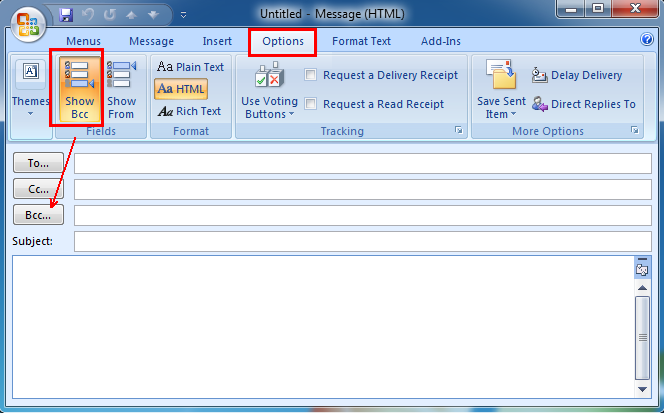
#BCC SOMEONE IN OUTLOOK FOR MAC HOW TO#
RELATED: How to Make the Navigation Bar Compact in Outlook 2013 You can name the contact anything you want, but “Undisclosed Recipients” has become kind of an accepted tradition. Rather, it’s just another contact with your own email address attached. The “Undisclosed Recipients” contact isn’t a special entity in Outlook. You can think of it as a courtesy. Anyone who receives the message will simply see “Undisclosed Recipients” as the main recipient of the message. Using an Undisclosed Recipients ContactĬreating an “Undisclosed Recipients” contact gives you a way to put something in the “To” field that makes it clear to recipients that other people also are getting the same message and that names are hidden.
:max_bytes(150000):strip_icc()/auto-bcc-cc-outlook-add-on-1173360-1-9c601ec8a6b14b3b8c42504481de0bd4.png)
Another way is by creating an “Undisclosed Recipients” contact. Recipients are going to have your address anyway, since you’re the one sending the message. The first is to simply put your own address in the “To” field. You can avoid that problem in one of two ways. If you leave the “To” field blank, many spam checkers will interpret the message as spam and your recipients might never see it.

However, there is one problem that might pop up.

If you run into trouble, try sending your message out to batched of about 20 recipients at a time. Also, some ISPs have been known to put limits on the number of people to whom you can send an email. Note: If you often send messages to the same large group of people, consider creating a distribution list to make things easier. You can also leave the “To” or “Cc” fields blank and just sent the message to the addresses in the “Bcc” field. Just remember that only the addresses in the “Bcc” field are hidden from recipients. You can put any addresses you like in the “To” or “Cc” fields along with any you put in the “Bcc” field. You can turn it off again by clicking that same “Bcc” button on the “Options” tab. Even better, the “Bcc” field will now appear on all new messages by default. The “Bcc” field is now added to the message window, and you can start adding addresses the same way you would in the “To” or “Cc” fields. In the “Show Fields” section, click the “Bcc” option. When you’re creating a message, in the message window, click the “Options” tab.
:max_bytes(150000):strip_icc()/004-add-bcc-recipients-os-x-mail-1172783-4e7f8219fdc94fa4a26a1bbcfed3a913.jpg)
The thing is, the “Bcc” field is hidden by default in Outlook.


 0 kommentar(er)
0 kommentar(er)
